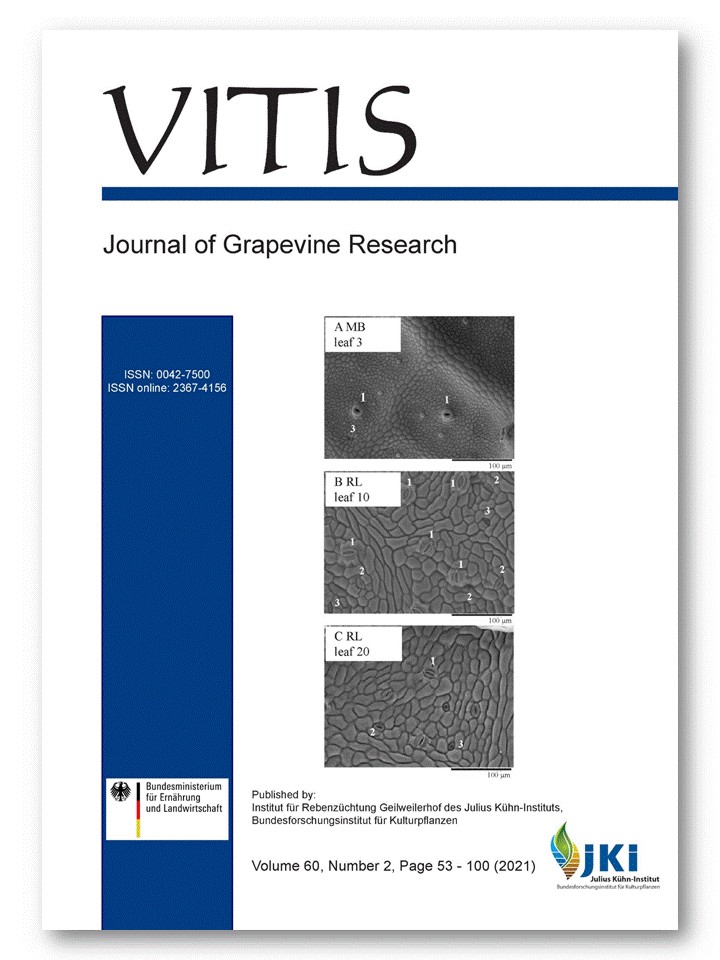Comparison of two sample preparation methods for 1H-NMR wine profiling: Direct analysis and solid-phase extraction
DOI:
https://doi.org/10.5073/vitis.2021.60.69-75Abstract
This study compares two sample preparation methods: direct analysis (DA) and solid-phase extraction (SPE) for wine samples analysis by proton nuclear magnetic resonance (1H-NMR) spectroscopy. For this purpose, the profile of Mexican commercial wines was evaluated. The selected wines were produced with different grape varieties: ('Barbera', 'Nebbiolo', 'Zinfandel', 'Merlot', 'Petite Syrah', 'Cabernet Sauvignon', 'White Zinfandel' and mixture of 'Chenin blanc' and 'Colombard') coming from the principal wine-producing region of Mexico, Baja California State. DA provided faster data acquisition in comparison to SPE and preserved the original sample composition. Using DA-NMR thirty two metabolites were identified, including organic acids, amino acids, sugars, alcohols and phenolic compounds. Furthermore, SPE-NMR using a polymeric sorbent allowed to retain phenolic compounds giving a better picture on the aromatic region and eliminating major polar compounds like water, ethanol and sugars. Fourteen compounds were identified by SPE-NMR including higher alcohols, flavanols and hydroxybenzoates. A control chart for the first principal component allowed to confirm the precision of the SPE-NMR method, while a comparison of the concentration of two metabolites found in both methods was used to evaluate their recovery (20 % for isoamyl alcohol and 78 % for phenethyl alcohol). The information obtained with both methods about the main compounds and phenolic metabolites provides new insights into the metabolomic profile of wine, which could be useful in future targeted studies.
Downloads
Additional Files
Published
Issue
Section
License
Copyright (c) 2021 The Author(s)

This work is licensed under a Creative Commons Attribution 4.0 International License.
The content of VITIS is published under a Creative Commons Attribution 4.0 license. Any user is free to share and adapt (remix, transform, build upon) the content as long as the original publication is attributed (authors, title, year, journal, issue, pages) and any changes to the original are clearly labeled. We do not prohibit or charge a fee for reuse of published content. The use of general descriptive names, trade names, trademarks, and so forth in any publication herein, even if not specifically indicated, does not imply that these names are not protected by the relevant laws and regulations. The submitting author agrees to these terms on behalf of all co-authors when submitting a manuscript. Please be aware that this license cannot be revoked. All authors retain the copyright on their work and are able to enter into separate, additional contractual arrangements.



